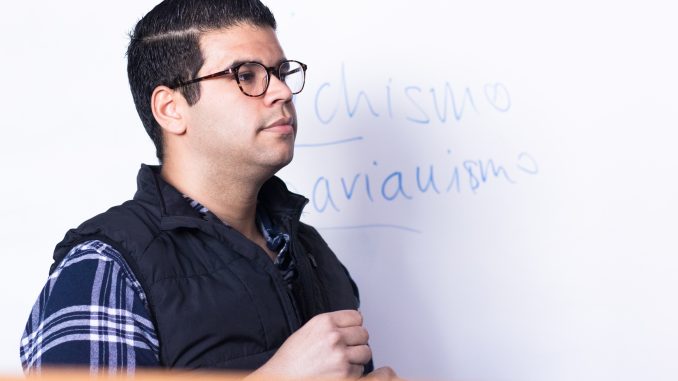
While growing up, weekend mornings at Kristine Aponte’s house started by blasting merengue and salsa music, signaling it was time to clean.
The junior communication studies major constantly listened to Latin music and followed several artists who started out rapping on the streets during her childhood and adolescence.
“It’s amazing to see people who were literally told their whole lives that they couldn’t make it, and now not only make it, but be successful in the American and worldwide markets,” Aponte said.
Temple University students who grew up in Latinx and Hispanic households have listened to different styles of Latin music for years. But with the rise of Latin music popularity in the United States, both Spanish-speaking and non-Spanish speaking members of the Temple community are tuning in to the genre.
Latin songs were ranked as the fifth most-consumed music genre in the U.S. over country music, according to a 2018 report from music data company BuzzAngle Music. The U.S. Latin music market produced $135 million, with 91 percent from streaming, according to the Recording Industry Association of America’s 2018 mid-year revenue report.
In 2017, “Despacito” by Puerto Rican artists Luis Fonsi and Daddy Yankee became popular in the U.S and internationally. Last year, Cardi B’s “I Like It,” featuring Puerto Rican trap and reggaeton singer Bad Bunny and Colombian reggaeton singer J Balvin, went viral, alongside J Balvin’s “Mi Gente,” which featured Beyonce on the remix.
Senior management information systems major Stephanie Cabrera said she struggles with mixing her Latinx and American identities. But reggaeton helps her retain her roots.
“I just have a different kind of connection to it because everyone listens to Migos and 21 Savage, but Bad Bunny is closer to home,” Cabrera said.
Previously, Latinx artists had to write their songs in English or translate them to break into the U.S. market, said Rafael Logrono, a journalism instructor and graduate student.
“Now, we see songs completely in Spanish resonating with non-Spanish speakers,” said Logrono, who is also a 2017 communication studies alumnus. “You even see artists who don’t speak Spanish performing in Spanish in hopes of entering a new market.”
Latinx artists like Natti Natasha, Becky G, Maluma and Anuel AA are rising in the U.S. music scene.
Gail Vivar, a senior journalism major, said Latin trap and reggaeton are universal genres “gaining traction” in the U.S. music market.
“I have a lot of pride, and I think it’s about time that people appreciate it because it’s so common in our community,” Vivar said. “It’s finally great to see other communities enjoying it too.”
Despite raising popularity, a language barrier still exists.
Kat Muolo, a junior international business major, said people connect more with songs when they understand the lyrics.
Muolo was born in Vietnam, but learned to appreciate reggaeton by joining Latinx clubs and organizations growing up, she said.
“People who don’t speak Spanish are slightly apprehensive because they just hear words and they don’t really connect with the songs or what they’re saying,” Muolo added.
For Logrono, the musical representation is crucial for the Latinx community.
“For too long, our community has been underrepresented or not represented at all in different key institutions,” he said. “I hope the popularity and influence of Latinx music continues to rise and become a strong force in the American music industry.”



Be the first to comment